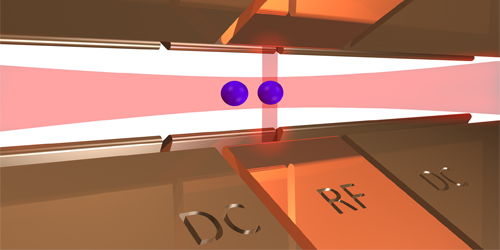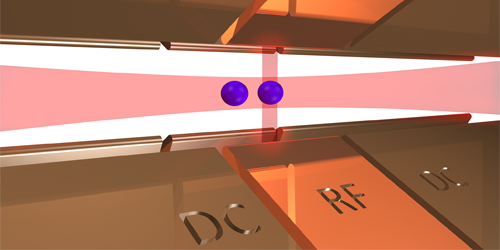Quantum Simulators Tackle Energy Transfer
Quantum phenomena are often so complex that they cannot be simulated even by the most powerful of today’s supercomputers. However, some of these phenomena could soon be within the reach of quantum simulators—assemblies of qubits that can be designed to simulate specific problems. In a proof of principle experiment, Hartmut Häffner of the University of California, Berkeley, and colleagues have used two calcium-ion qubits to simulate a quantum process known as vibrationally assisted energy transfer, which occurs in many biological and chemical systems.
Energy transfer is an important step in photosynthesis and in the generation of electricity in solar cells. The transfer is typically triggered by a photon, which excites part of a molecule. An excited charge carrier then transfers energy by jumping from a donor site to an acceptor site. But if this particle cannot find a matching energy level in the acceptor site, the transfer is only possible if it’s “assisted” by molecular or lattice vibrations that take up or provide the required energy difference.
Häffner’s group simulated this process with two trapped laser-cooled calcium ions. Using lasers, they created conditions mimicking the transfer of energy from an acceptor to a donor group within a molecule. They demonstrated that the ions could transfer energy efficiently to each other under certain energy-conserving conditions reminiscent of vibrationally assisted transfer. For example, when the field of a focused laser beam shifted the electronic energy levels of one ion, energy could flow to the other ion only if the two-ion system had extra vibrational energy compensating for the ions’ energy difference. While the results did not yield new biological or physical insights, the researchers expect that setups using more ion qubits will be able to simulate more realistic energy-transfer conditions.
The research is published in Physical Review X.
–Sophia Chen
Sophia Chen is a freelance writer based in Tucson, Arizona.





